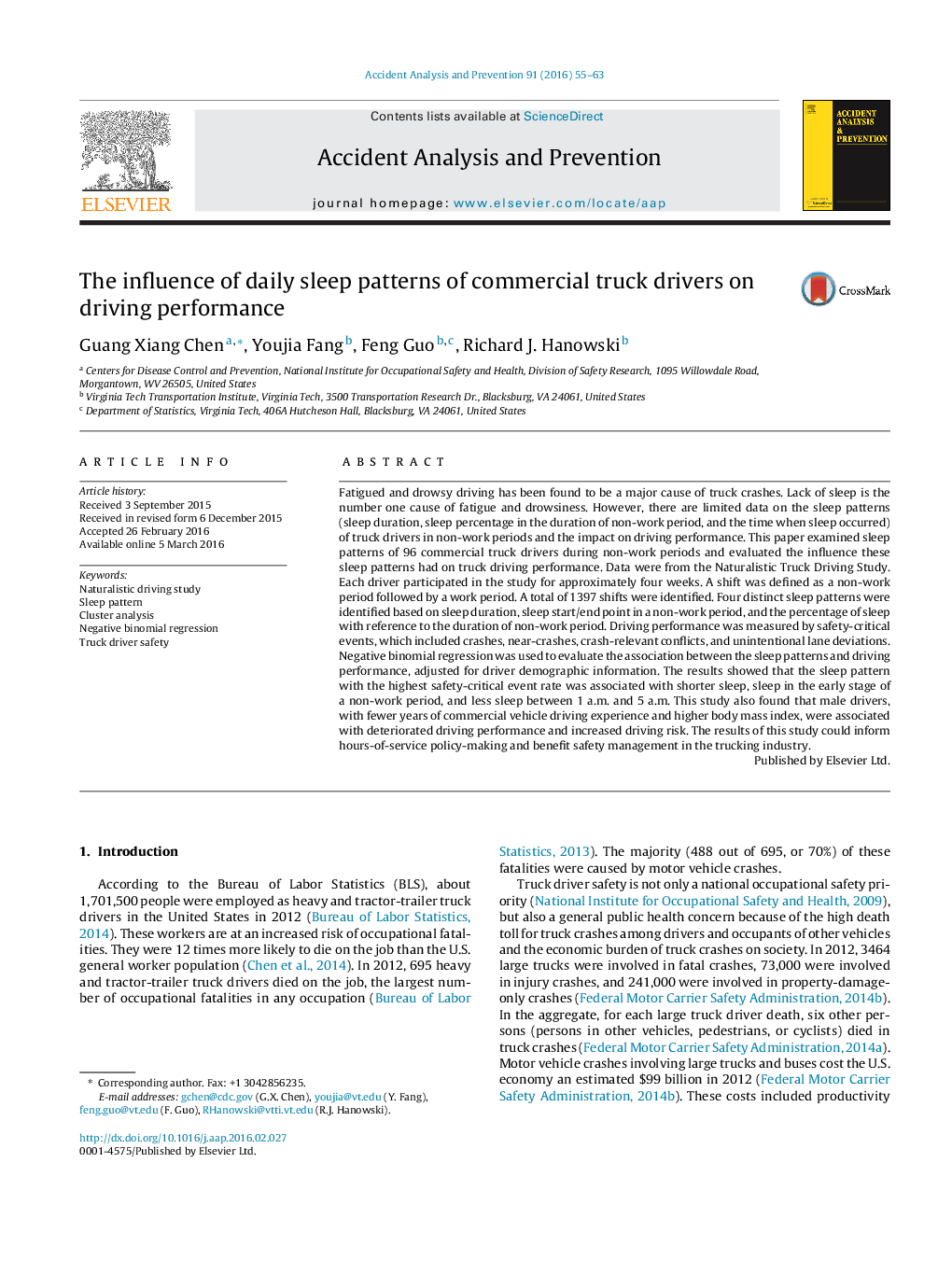| کد مقاله | کد نشریه | سال انتشار | مقاله انگلیسی | نسخه تمام متن |
|---|---|---|---|---|
| 571980 | 1452906 | 2016 | 9 صفحه PDF | دانلود رایگان |
• Four sleep patterns were identified based on sleep duration, sleep start/end point in non-work period, and the percentage of sleep with reference to the duration of non-work period.
• Shorter sleep duration, sleep in the early stage of non-work period, and less sleep between 1 to 5 a.m. were related to higher driving safety-critical event rate in subsequent work period.
• Male truck drivers with fewer years of commercial vehicle driving experience and higher BMI were associated with increased driving risk.
Fatigued and drowsy driving has been found to be a major cause of truck crashes. Lack of sleep is the number one cause of fatigue and drowsiness. However, there are limited data on the sleep patterns (sleep duration, sleep percentage in the duration of non-work period, and the time when sleep occurred) of truck drivers in non-work periods and the impact on driving performance. This paper examined sleep patterns of 96 commercial truck drivers during non-work periods and evaluated the influence these sleep patterns had on truck driving performance. Data were from the Naturalistic Truck Driving Study. Each driver participated in the study for approximately four weeks. A shift was defined as a non-work period followed by a work period. A total of 1397 shifts were identified. Four distinct sleep patterns were identified based on sleep duration, sleep start/end point in a non-work period, and the percentage of sleep with reference to the duration of non-work period. Driving performance was measured by safety-critical events, which included crashes, near-crashes, crash-relevant conflicts, and unintentional lane deviations. Negative binomial regression was used to evaluate the association between the sleep patterns and driving performance, adjusted for driver demographic information. The results showed that the sleep pattern with the highest safety-critical event rate was associated with shorter sleep, sleep in the early stage of a non-work period, and less sleep between 1 a.m. and 5 a.m. This study also found that male drivers, with fewer years of commercial vehicle driving experience and higher body mass index, were associated with deteriorated driving performance and increased driving risk. The results of this study could inform hours-of-service policy-making and benefit safety management in the trucking industry.
Journal: Accident Analysis & Prevention - Volume 91, June 2016, Pages 55–63
